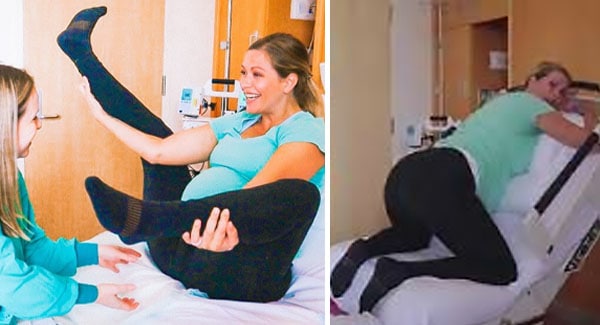What is that experience really like? We’ve all seen the scene in a movie where the mother pushes her baby three or four times while screaming and perspiring. How do you actually force the baby out after your labor? Did you know there are postures that can help you push the baby out more quickly and stop pushing for days on end?
Standing or strolling.

There’s an awesome reason to induce vertical: It makes a difference you work with gravity, permitting your pelvis to open and your infant to move down into your birth canal. Walking is something you will be more likely to do early instead of later in labor since it’ll be harder to head for the hallways for many laps once the compressions are coming one right after the other. Standing, be that as it may, is something you’ll do at any point amid labor. Inclining against a divider or your accomplice for bolster amid withdrawals is best since it’s not that easy to stand up straight when you’re getting crushed down underneath.
Rocking. Rocking, either on a chair or influencing back and forward, permit your pelvis to move and empowers the child to plummet (down, infant, down!). And the more upright you’re, the more gravity can assist you out.

Squatting. You’ll likely utilize this position as it were late in labor or amid conveyance itself. Like standing, hunching down moreover utilizes Newton’s finest whereas opening up the pelvis to deliver your infant more room to move on down. You’ll be able to utilize your accomplice for hunching down back (you’ll likely be a small shaky, so you’ll require all the bolster you’ll get), otherwise, you can utilize a hunching down, or birthing, bar, which is regularly connected to the birthing bed (inclining on the bar will keep your legs from tiring out as you squat).

Sitting. Sitting — in bed, in your partner’s arms, or on a birthing ball — can ease the torment of withdrawals and permit gravity to help in bringing your infant down into the birth canal. Sitting too makes a difference to open up your pelvis, and it’s a parcel less demanding than hunching down for long periods.
Inclining over or stooping. Inclining forward — over a stack of pads on a bed, for occurrence — or stooping over a chair or birthing ball can be super accommodating once you have back labor (when the back of the baby’s head is pushing against your spine) since it energizes the child to move forward, taking the pressure off your back. Then again, you’ll be able to incline over your partner’s bear to soothe a few of that weight.

Hands and knees. Going on all fours is another way to manage more comfortably in case you’re encountering back labor. This position permits you to do pelvic tilts for consolation whereas giving your accomplice extraordinary get to to your back for kneading and counterpressure (you’ll need it, huge time). Numerous mothers like to provide in this position no matter what kind of labor they’re having since it opens up the pelvis and employments gravity to coax the infant down.

Side-lying. Superior to lying on your back since it doesn’t compress the major veins in your body (which seem to compromise bloodstream to your child), side-lying could be a great alternative on the off chance that you’re as well tired of hunching down or sitting. Lying on your side too puts your accomplice in a great position — he’ll be way better able to put his best knead strategies to utilize. Side-lying can moreover be a great conveyance position — it can help moderate a too-fast birth (yes, there’s such a thing) and ease the torment of a few withdrawals.
What labor positions are most comfortable?
The most comfortable labor position is the position that you feel most comfortable in, and, according to the research, there is no one best position. That said, some positions may be extra helpful in certain laboring scenarios


